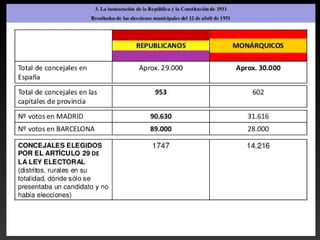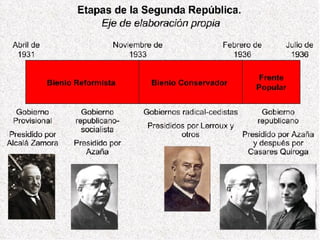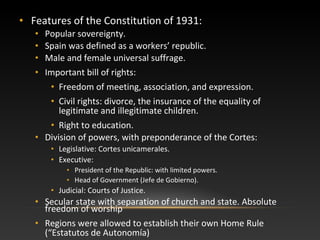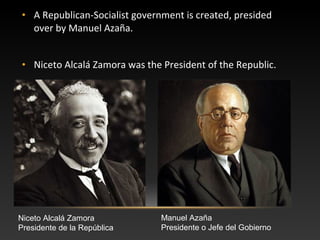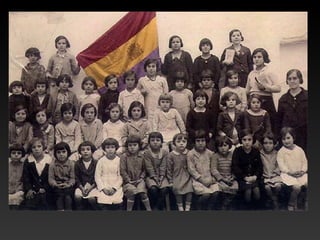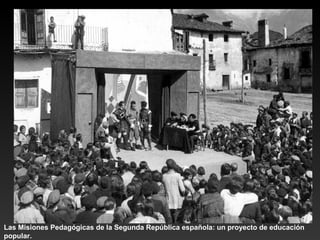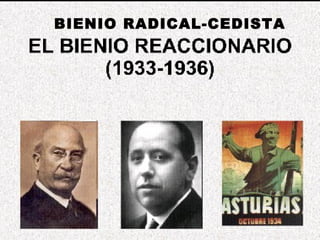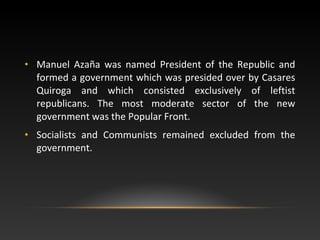The document summarizes the history of the Spanish Second Republic from 1931 to 1936. Key events include the overthrow of the monarchy in 1931 and establishment of the democratic republic, the progressive constitution of 1931, a period of leftist reform from 1931-1933 followed by a conservative backlash from 1933-1936 under the Radical-CEDA government, and rising tensions that led to the Popular Front election victory in 1936 and military coup planned shortly thereafter that plunged Spain into civil war.









